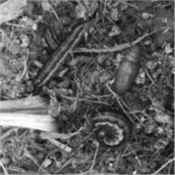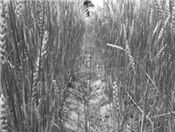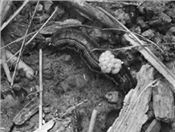Armyworms In Wheat (Worse Than It Looks)
DR. SCOTT STEWART
JACKSON, TENN.
I had the opportunity to visit some fields in Shelby County and had reports from a couple of other areas where armyworms have completely defoliated some wheat fields (or spots in fields). Armyworms were not hard to find, but many had pupated (“cycled out”) or were being killed by diseases and parasites. The good news is these fields were already at soft dough or further along in development, as is most every wheat field in the state. Research at the University of Arkansas done several years ago showed minimal or no yield loss from even severe defoliation once wheat is past the milk stage, and it appears much of the defoliation I observed occurred in the last 7-10 days when the wheat was in the soft dough stage. Because no ‘head cutting was observed, I’m betting this defoliation will have little impact on yield, but it is impressive.
Armyworms in wheat often hide during the hot part of the day under residue, and they also drop to the ground when disturbed, so you have to get down on your knees to really determine infestation levels. Treatment is recommended when 6-8 larvae are found per square foot AND if wheat is still in the milk stage.
Note: This defoliation was caused by the armyworm (Pseudaletia unipuncta), sometime called the true armyworm to distinguish it from the fall armyworm. True armyworms typically are a springtime pest that may occur in wheat. Infestations may literally march from wheat or ditch-bank grasses into adjacent crops like corn, although I did not observe this yesterday. Fall armyworms (Spodoptera frugiperda) infestations typically occur in late summer and fall, as we often see in bermudagrass pastures. ∆
DR. SCOTT STEWART: IPM Extension Specialist, University of Tennessee

Armyworm larvae and pupa found in wheat

Wheat defoliated by armyworm

Parasitic wasp larvae on armyworm